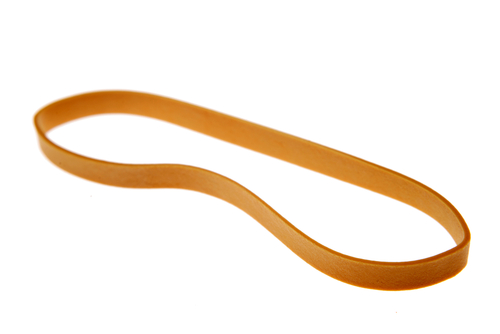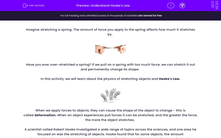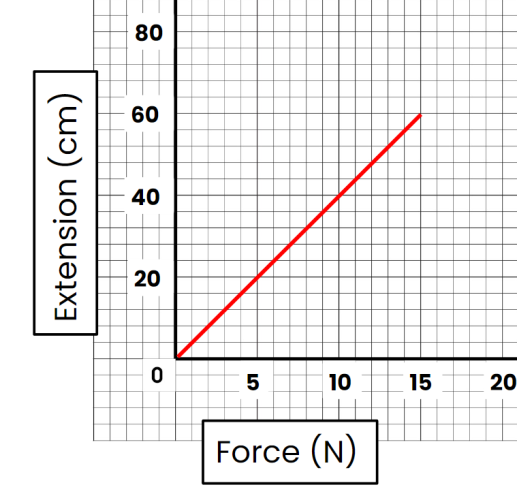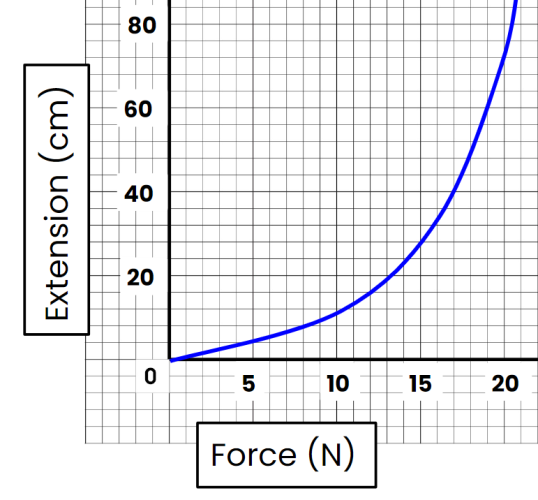Imagine stretching a spring. The amount of force you apply to the spring affects how much it stretches by.

Have you ever over-stretched a spring? If we pull on a spring with too much force, we can stretch it out and permanently change its shape.
In this activity, we will learn about the physics of stretching objects and Hooke's Law.

When we apply forces to objects, they can cause the shape of the object to change - this is called deformation. When an object experiences pull forces it can be stretched, and the greater the force, the more the object stretches.
A scientist called Robert Hooke investigated a wide range of topics across the sciences, and one area he focused on was the stretching of objects. Hooke found that for some objects, the amount of extension they experienced when stretched, was directly proportional to the force applied to the object.
In other words, an object might stretch twice as much if it experiences twice the force, or three times as much if it experiences three times the force.
Here is an example. A spring experiences a force of 5 Newtons. The spring increases its length by 20 cm (that's the extension). If the force is now 10 Newtons instead, the spring will stretch by 40 cm.
This graph of force against extension is a straight line, passing through the origin (0,0). This confirms that, for this material, the force and extension are directly proportional.

Not all materials follow Hooke's law - only some of them do. So, an elastic band, for example, might not display a proportional relationship between force and extension as it does not follow Hooke's Law. If you plotted a graph of force vs. extension for an elastic band, it might look like this instead:
The line is curved. The relationship between force and extension is not linear.
So, what happens when we over-stretch a spring?

Materials like springs return to their original shape when the force on them is removed. But, if we stretch them too much, the spring won't go back to its original length. That is because we have gone past the elastic limit.
At forces below the elastic limit, the object returns to its original shape.
At forces above the elastic limit, the object changes shape permanently.
Now that we understand some more about stretching materials and Hooke's Law, let's try some questions!










